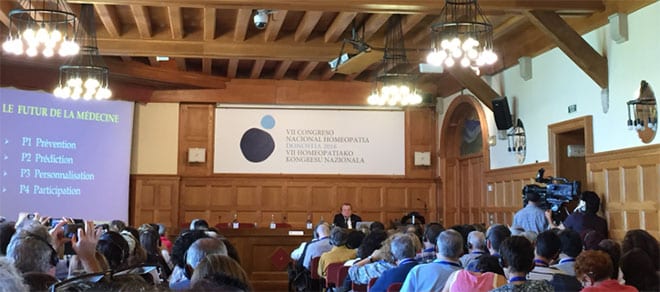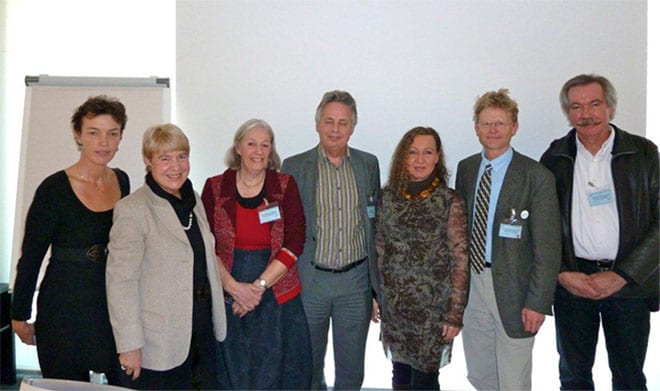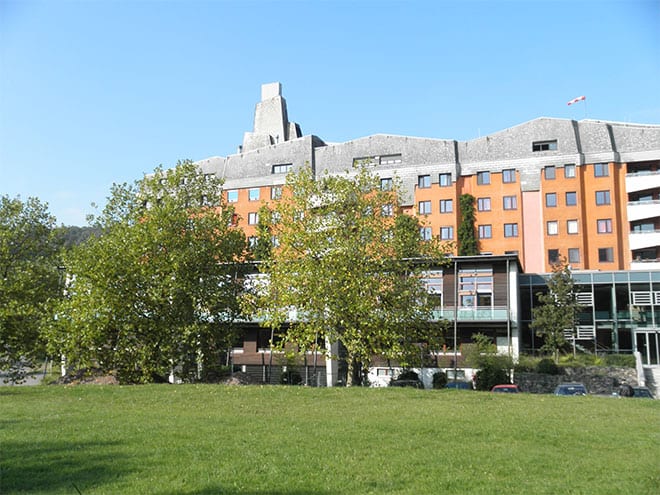
Concept of integrative medicine
Complementary medicine is about broadening the unilateral view of molecular medicine and taking a broader view of health and disease.
What we call in Europe biological medicine (integrative medicine in the USA) can be defined as "ââ'¬Å"Healing-oriented medicine, which takes into account the whole person (body, mind and spirit), including all aspects of man. It emphasises the therapeutic relationship and makes use of all appropriate therapies, both conventional and alternative.â'¬.
There is an old dispute between homeopathy and allopathy.. But a therapy based on allopathy alone does not stimulate our organism, because the remedy depresses the immune system. On the other hand, integrative medicine is precisely about stimulating the immune system. and our body's ability to respond.
The conventional medical model is based on suppressing the symptom with drugs, not on restoring health. Allopathy makes the body dependent on external substances and displaces internal processes capable of restoring health..
The absence of symptoms does not mean that we are healthy. The integrative medicine is about healing by strengthening the active state of health.
The oncology patient's quality of life is improved by balancing the negative effects of conventional therapies.
But In reality, in medicine there is only oneThe important thing is to be able to have the maximum options to prevent, cure or alleviate the diseases that affect any human being, avoiding as far as possible the side effects and contraindications.
Situation in Spain
Homeopathy was introduced in Spain by Dr. Folch in 1931. In 1933 there was a Congress in which the Dr. Gregorio Marañón stated that "a large number of patients come to the homeopathic doctor intoxicated by the treatments of classical medicine."
In Spain, homeopathy officially disappeared after the civil war.. Before it, homeopathic congresses were held, including international ones, such as the one held in Barcelona in September 1924. At that time, Barcelona was the centre of homeopathic medicine.
But after the Civil War, homeopathy was exiled. A case in point is that of the doctor and member of parliament Joan Sole i Pla, who went into exile in Colombia.
In 1991 the FEMH, the Spanish Federation of Homeopathic Doctors, was created.. This May 2016 The VII National Congress of Homeopathy was held in Donosti, reflecting the good health of homeopathic medicine in our country at the moment.

Today, When complementary medicine is used, the reason is to balance the toxic effects of conventional therapies with complementary therapies.
Directive 2001/83/EC regulates specific provisions for homeopathic products, and obliges the government with RD 870/2013 to regulate homeopathic medicines. Ã' Pursuant to the second provision of the RD 2208/1994 a provisional regulation of homeopathic medicines had been made.
The Spanish Society of Medical Oncology has created a section on Integrative Medicine (www.oncosaludable.es)
Dr. Pilar Lianes, head of the Medical Oncology service at the Hospital de Matarédica, answered some questions to the readers of a newspaper. Among them, about complementary therapies used in central Europe such as the mistletoe extract. It is used as an adjunct to chemo- or radiotherapy treatment to boost the immune system.. Although he points out that there are meta-analyses that show its usefulness, he considers it to be a adjuvant.
Integrative medicine in the European Union
The CAMbrella study, financed by the European Commission, which was carried out over three years with sixteen European universities in twelve countries with funding of 3 million euros, reveals that 67% of the population use complementary medicinesHowever, patient information for decision-making is not sufficient.

This is why the European Union is proposing a 2020 roadmap: that patients can benefit from clear information about existing complementary medicinesThe safety, efficacy and cost of each of them. It is essential to to include them in the medical curriculum to provide sufficient training and to enable patients to be informed in a consistent and clear manner.
Switzerland
Switzerland included complementary medicine in public health care in 2009 under the influence of cantons. There are 5 forms of complementary medicine (homeopathic, anthroposophic, phytotherapy, natural therapy and TCM).
Integrative medicine is integrated in Switzerland, Germany and Austria.
Germany and anthroposophic medicine
Barbara Steffens, Minister of Health of North Rhine-Westphalia, at the Herdecke Hospital, a hospital for anthroposophic medicine linked to the University of Witten-Herdecke, said: anthroposophic medicine is part of the health system. The patient is part of the process of restoring health.
There are 25 anthroposophically oriented hospitals in Europe, three of them, Herdeche, Berlin and Bern, have university structures.

In Germany, integrative medicine is increasingly used. Therapies such as acupuncture, homeopathy and osteopathy are part of the statutory health insurance in support of classical therapies.
Situation in France
In 2013, Robert Kempenich, president of Anthroposophic Medicine, in a study commission commented that anthroposophic medicine helps to promote health and not only to treat the disease, is individual and helps each individual to foster his or her self-healing capacities.
The situation in France is different from that in Germany, since French nationals can select the complementary therapy that best suits their illness..
United Kingdom, Canada, Australia, Mexico
At United Kingdom since 1982 there has been a British Complementary Medicines Research Council with homeopathic hospitals in London, Glasgow, etc.
At Canada In 1999 the government accepted 53 recommendations made by the Standing Committee on Health and the Advisory Committee on Complementary Medicines was established.
Australia in 2010 created the Advisory Committee on Complementary Medicines (ACCM, replacing the CMEC)
At México there was a draft law in 2009 on complementary medicine following a WHO recommendation in 2003
United States: Obama introduces alternative medicines in his health care reform
Obama says that the way forward is the one given by SwitzerlandThe aim is to integrate integrative medicine into the public health system.
In the past, the efforts of a US senator led to the creation of the National Center for Complementary and Integrative Health (NCCIH).
At the same time, conventional medicine, in parallel, is discovering the role that the immune system might play in the fighting cancer.
Source: Blogs La Vanguardia. Diary of the Future


1 thought on “Situación de la medicina integrativa en el mundo”
VERY GOOD EVENING, PLEASE INFORM ME IF THE AMERICAN UNIVERSITY OF ARGENTINA, BUENOS AIRES, IS AUTHORISED TO TEACH THE DOCTORATE IN INTEGRATIVE MEDICINE, YES OR NO. THANK YOU
Comments are closed.